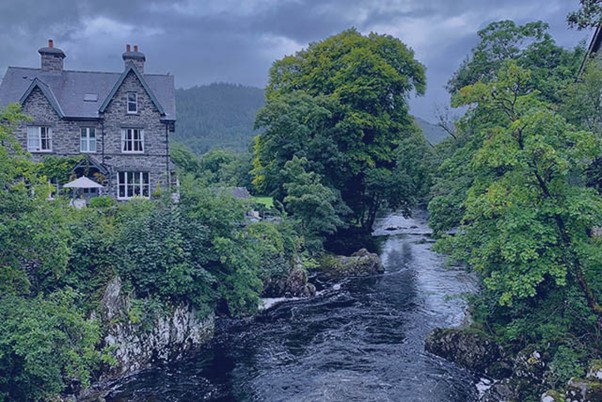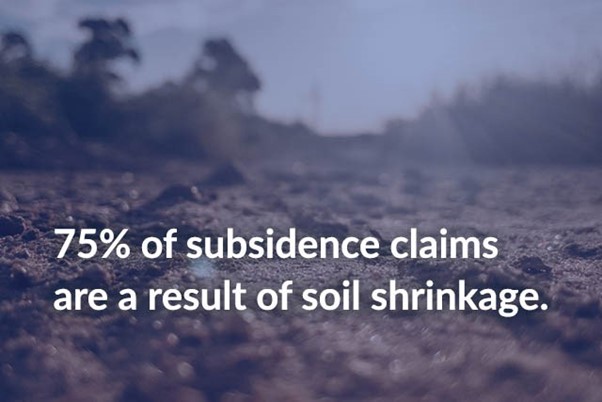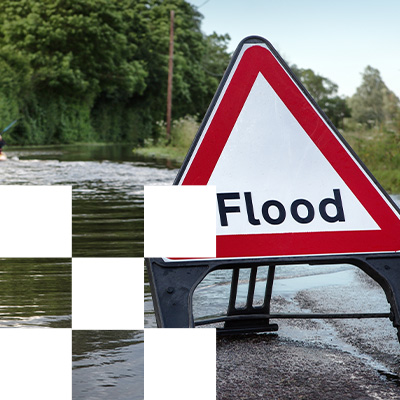Subsidence Risk analysis – more important than ever
Many organisations are now looking at recent weather patterns to work out how subsidence might affect property owners over the longer term. We’re asking, “why aren’t more teams analysing subsidence risk right now – insurers, developers, planners?”
A couple of years ago, the Association of British Insurers put the spotlight on subsidence impact. That report showed claims for subsidence reaching their highest levels in 12 years – a 357% increase being the highest quarterly jump since records started.
Since then, many large insurers have been pro-active, but as weather patterns change, we’re encouraging more organisations to explore the tools that can help mitigate exposure to costs. Not only for subsidence, but also for the impact of flash flooding which can often follow prolonged dry spells as heavy downpours hit parched ground.
Subsidence claims have gone up, but teams could be bringing exposure down
Our insurance expert, Ben Ruhrmund, says, “Subsidence isn’t going away. It’s not just insurers who could be mitigating the risk of exposure to un-necessary costs. The precise tools to understand subsidence have never been more accessible or affordable, and we’d like to invite those teams to challenge us. Emapsite’s Subsidence Risk is so easy to use – we think you’ll find value instantly.”
Weather fluctuations are directly linked to subsidence. As the ground loses moisture and shrinks, claims increase. Emapsite’s Subsidence Risk product highlights known factors that might increase the likelihood of subsidence claims.
As in previous years, insurers in particular will be waiting to see if south-eastern England is worst affected, where buildings are well-known for being constructed on subsidence-prone clay soil. It’s something that has an influence not only on subsidence but, when compacted, on flash flooding too. It’s a type of soil that has far-reaching impact for homeowners. That said, subsidence is caused by several factors. However, around 75% of the subsidence claims overall are a result of soil shrinkage – a combination of clay substrates drying out due to low rainfall and tree roots branching out in search of moisture. In fact, tree issues are cited as the underlying problem in 7 out of 10 claims, and that runs true nationwide.


Analysis reveals risk and helps with the organisation of preventative maintenance
Ben continues, “Our data and our services makes it possible to access this kind of analysis, even if you don’t have a large GIS team in-house. It’s specialist, but we can support you. Best of all, with previous clients we’ve proved that it’s cost-effective from day one – we can share case studies with interested teams.”
Property by property, a single tree may be just as much of a problem as a moisture-seeking copse and proximity to buildings, and height and breadth of canopies can also play a part in setting levels of risk. Tree data is complex. Analysts need it to be interpreted at an individual address level. This involves substantial processing capacity – making sure the source information is as up to date as it can be – which means that, while one or two larger insurers have invested in the technology, smaller insurers are struggling to offer the same service.
Subsidence Risk provides a normalised risk score – it makes subsidence risk easy to quantify on an individual property basis. It’s ideal tool for anyone who’d like to see that risk in detail or share the information in a way that makes it easy to understand.
What’s more, Subsidence Risk is accessible as a downloadable file and as a web-based service – which means these insights are accessible to a wider team.
You can find more information on Emapsite’s Subsidence product here
Latest News

Future-proofing Assets Against Flooding in Britain
A recent investigation by The Guardian has revealed a sobering reality: millions more properties across Britain are now at risk of flooding as climate change intensifies. This makes it more crucial than ever to act - and to ensure those actions are guided by reliable, high-quality data.
Read Full Article-
Why address data is the unsung hero in the UK’s new-build recovery
Read Full Article -
Decoding the OS National Geographic Database: A Game-Changer for Utilities
Read Full Article
